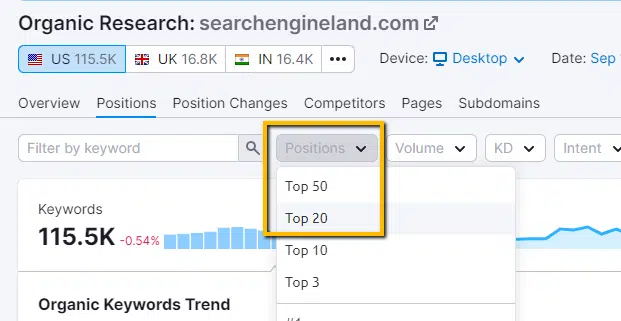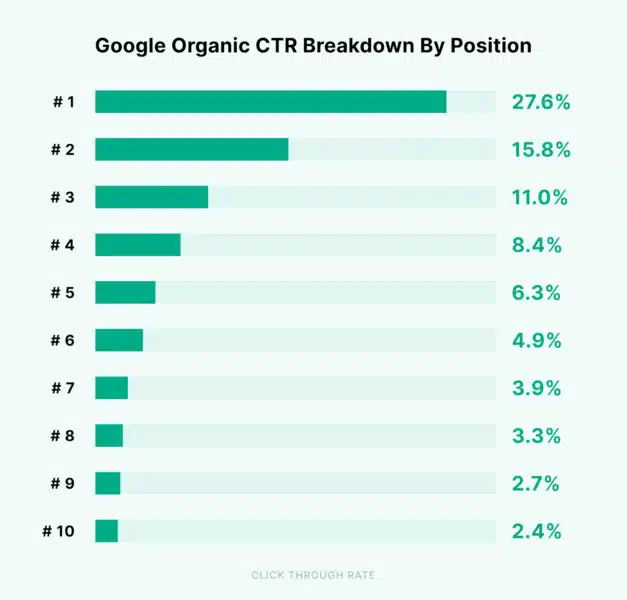SEO often doesn’t get a fair seat at the table when marketing budgets are determined.
Even though SEO is marketing.
As we’re approaching a time when many companies are having meetings in their conference rooms to determine budget allocations for the upcoming year, I want to help further the case as to why SEO should have a voice in the room (and budget in your marketing plans).
But first, let me address a bit more why I feel SEO doesn’t get its fair shake.
Proving the value of SEO is complicated
SEO can be a challenge for some in marketing departments to wrap their heads around. There are many moving parts and it’s not as easy as PPC when you understand exactly how that works.
With PPC it’s generally a matter of:
- Choose keywords.
- Write/ place ads.
- Pay when someone clicks.
- Send that click to a landing page of your choosing.
- Report on results (sales/leads).
It’s true. SEO is more complex than this. And, because of its complexity, I will often instruct prospects to think carefully about not just when to invest in SEO, but whether SEO is even a really viable investment in the first place. Often, the answer to these questions is “it depends.”
Remember, an investment in SEO doesn’t just revolve around hiring an agency or an individual in-house to oversee and drive the strategy.
Unlike PPC, there are many other considerations, including:
- Web design and development that may be required, such as:
- Creating a new architecture / navigational structure.
- Creating new page templates to better support SEO.
- Creating a blog/resource section on your website (if you don’t already have one).
- Content, such as:
- Page content.
- Resourceful content.
- Thought leadership, white papers or webinars.
- PR and legal reviews:
- Ensuring that content meets with company compliance needs (especially for medical/pharma/legal/insurance industries and other highly regulated industries).
Case in point: My agency has a client who’s engaged us to aid in the re-structuring of their website (including an audit of their existing presence versus that of a competitor).
The work coming out of this audit resulted in 130 hours worth of web development requirements this client needs to see through to completion in order for the investment that they’ve made with us to be substantiated.
I highly recommend that you consult with a trusted friend/partner who has experience in SEO to help you to make this determination. Many SEOs (the nice ones 😊) would be happy to provide a free analysis/opportunity assessment. Take advantage of the advice.
Today, I’m going to assume that we’ve determined that there is an opportunity for SEO to provide value for your business. Undoubtedly, if you’re in the conference room trying to determine what – if anything – to budget for SEO, you will want to better understand:
- The size of the opportunity.
- The size of the investment needed to get you there.
Get the daily newsletter search marketers rely on.
Size of the opportunity
When determining the “value” of an SEO effort, there are two sides to the coin.
One easy metric is to consider “replacement cost” of the traffic. If you were to buy this same traffic via PPC (that you’re considering targeting via SEO) what would it have cost? Semrush makes this available via their “Traffic Cost” metric:


This can sometimes be a big number, as we see for Search Engine Land. You may find that many of your competitors are realizing this kind of value, yet you aren’t.
That may be as far as you need to go to make your case to the board that SEO is “worth the investment.” That’s one way to measure it.
Understanding the traffic potential of SEO efforts
But if you’re a mature marketer, you will try to move beyond just “click value” to something more meaningful.
- Tangible value.
- Sales.
- Leads.
- Downloads of white papers.
- Sign-ups for webinars.
How you measure this will depend upon whether your business is ecommerce or B2B/lead gen. For both verticals, you’ll need to do two things:
- Identify the possible keywords that you’ll want to target.
- Determine what it might take to compete (i.e., site structure/link acquisition).
Since I’m assuming that you’re a marketing head and perhaps not an SEO, here’s how I would quickly suggest you conduct this type of assessment.
Using Semrush (subscription required), navigate your way to the Organic Research section. Here, you can enter the domains/website addresses for direct competitors who you believe are doing well with their organic presence.
Once you’ve found a competitor who appears to have a significant organic presence, click into the Top Organic Keywords section and click View all organic keywords.


You will now see a complete list of your competitors’ keywords. But this will also include your competitors’ “brand” keywords (their company name, etc.). You need to filter this:


Still, though, this data isn’t great. It’s showing us any keywords that our competitor is ranking for within Google’s top 100 results.
Let’s make this more meaningful/useful by reducing that number down to rankings “which matter” (that’s a subjective metric). In this case, I’m going to only concern myself with the top 20 ranking keywords:


Now I have a workable list of keywords that I know are driving significant organic search traffic to my competitor(s):


This shows me that:
- There are 19,029 keywords ranking in Google’s top 20.
- The “local guide program” is driving a large share of traffic to my competitor.
- The “seo” keyword would have cost me approximately $6.20 cost per click if I were to buy that traffic via Google Ads.
And, as mentioned previously, we can see the “value” of this competitors’ non-brand organic traffic, based on the “replacement cost” (“Traffic Cost”):


If you’re highly ambitious, this is the next step that you can take. Download the Top 20 Rankings list into a spreadsheet.


Create columns into your spreadsheet to make some assumptions (i.e., Ranking Top 3; Ranking 4-7; Ranking 8-10; or you may want to get as detailed as to estimate each top 10 position).
Since we have the estimated monthly search volume for each keyword, you can now multiply those numbers by the potential click-through rate of each potential/future rankings.
Thanks to Backlinko’s work on average CTR in the Google SERP, we have some estimates:


SEO is an imperfect science. But this at least gives you some visibility into the traffic potential that exists for an investment. In short, it puts some math into the projections.
Assessing SEO opportunities in ecommerce and B2B/lead gen
Now that you have at least an idea of the traffic potential, we need to break out the tasks for determining what potential “real” value might exist, in terms of things that are more tangible (sales/leads, etc.).
For the purposes of this article, I’ll be focused on either an ecommerce website or a B2B/lead gen website.
Ecommerce opportunity assessment
If you’re an ecommerce website, you should have a general sense of:
- Conversion rate into a sale.
- Average (net) value of a sale.
Knowing these things, you can run some estimates on how much you might make based upon varying degrees of traffic increases.
For instance:
- 10,000 visits per month x 1.5% conversion rate into a sale = 150 sales.
- 150 sales x $300 average net value of a sale = $45,000 per month.
Knowing this potential real value, you can then assess if the investment that you believe will be required in an SEO effort is “worth it.”
B2B/lead gen opportunity assessment
If you’re B2B/lead gen, you should have a sense of conversion rate into a lead (and hopefully you’re tracking form submissions, phone calls, chat/messaging apps and other “leads”/conversion types).
Working with this and your internal data on conversion rates from lead to qualified lead and qualified lead to sale, you should be able to calculate the potential ROI.
Taking the same traffic potential above (10,000), here’s what that calculation might look like:
- 10,000 visitors x 5% conversion rate into a lead = 500 leads.
- Let’s say that ½ of those leads are qualified (500 x .5 = 250).
- Then, let’s say that we convert 40% of our qualified leads into a sale (250 x .4 = 100).
- So, we have 100 potential sales from the SEO investment.
What’s our average net value of a sale?
Every business is different. We have a client whose average net value of a sale is $400,000. That makes the ROI argument pretty easy to make.
But let’s say that your average net value of a sale is $400. With 100 sales x $400, that’s $40,000 in net value from your SEO investment.
Knowing this, you can determine how much you can profitably invest into an SEO effort.
Putting the math in SEO
These formulas are far from perfect. But they provide an opportunity to put math behind what you’re asking for in an investment into an SEO effort.
You should also caution those involved that SEO is not a quick fix. It may very well be that you’ll spend the first months of the effort in deep research before big changes occur.
As mentioned above, other hard (internal) costs could be involved, such as a restructuring of your website, content additions, page additions and PR/thought Leadership items. Do your best to account for these things.
While there are certainly times when I have strongly recommended against a company investing in an SEO effort, it’s more often that you’ll know me as a champion of the channel.
Contributing authors are invited to create content for Search Engine Land and are chosen for their expertise and contribution to the search community. Our contributors work under the oversight of the editorial staff and contributions are checked for quality and relevance to our readers. The opinions they express are their own.



